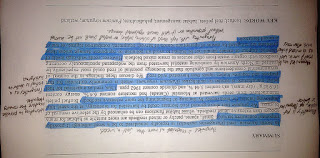 |
| Food or Fuel? |
When people think about biofuels,
they seem to imagine ethanol from corn being used in a politician’s luxury automobile,
while they apologize halfheartedly to a starving third world nation. This is called the Food versus Fuel debate. The Food versus Fuel debate is weighing the
options of using the U.S.'s bountiful corn crops to fight global hunger, or to use it to make ethanol fuel.
While both sides have their delightfully biased opinions, they’re both terribly misinformed in most cases. The
part everybody misses is that ethanol doesn’t only come from Corn.
Corn is a starchy feedstock,
providing large quantities of ethanol for low cost, but it is also a staple
human food item, thus making it expensive. Cellulose is a polymer of glucose and is present in many
plants as a structural fiber. Cellulosic
biomass makes up 95% of the Earth’s biomass, representing an abundant resource
unusable for human consumption. To make a fuel, Cellulose
can be broken down into glucose, which can then be consumed by yeast to make
ethanol. That forms a compromise for both
sides of the debate, but why don’t we pursue cellulosic ethanol already if this
is the case?
The only way to make the compromise
between food and fuel is to develop cost-effective methods of
producing cellulosic ethanol. But what price is too much when the subject is solving
both global hunger and alternative fuels?
Brown, Lester R. "Cars and People Compete for Grain - The Permaculture Research Institute." The Permaculture Research Institute Cars and People Compete for Grain Comments. The Permaculture Research Institute, 02 June 2010. Web. 26 Dec. 2015. <http://permaculturenews.org/2010/06/02/cars-and-people-compete-for-grain/>.
|



